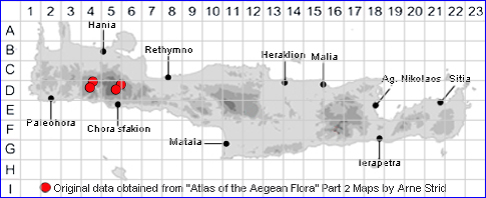
MINUARTIA ATTICA subsp. IDAEA
Family and Genus:- See- CARYOPHYLLACEAE
Common Names:- None
Homotypic Synonyms:- Minuartia verna ssp. idaea
Meaning:- Minuartia (L) For Jaun Minuart (1693-1768), botanical writer of
Barcelona.
Idaea (L) From around mount Ida.
General description:- Perennial plant, with a woody base, laxly tufted
(caespitose), hairless (glabrous).
Stems:-
1) 5-10 cm., downy, glandular, with 1-7 flowers.
Leaves:-
1) Up to 10 mm narrow, linear to oblanceolate - filiform
Flower:-
1) Cymes, lax, few- to many-flowered (3-20 flowers).
2) Pedicels, longer than the sepals.
3) Sepals, 2-5 mm ovate-lanceolate, usually glandular-pubescent.
4) Petals, acute, widest below the middle, more or less ½-1½ times as long as the
sepals.
5) Anthers, reddish
6) Protandrous, i.e.shedding pollen before the stigma is receptive..
Fruit:-
1) Capsule, equalling or slightly exceeding the sepals.
2) Seeds, 0·5-1 mm, varying from almost smooth to acutely tuberculate.
Key features:-
1) Leaves, somewhat recurved but never secund.
2) Stems, not black below.
3) Petals, ovate, acute.
4) Plant, woody below, glaucous.
5) Sepals, (2-)3-5 mm.
6) Leaves, ± rigid.
Habitat:- Rocky slopes, mainly on limestone, screes, open woodland. 700-2400 m.
Distribution:- Endemic to Crete, Karpathos and the East Aegean Islands.
Flowering time:- May-Aug.
Photos by:- Fotis Samaritakis
SPECIES DESCRIPTION
